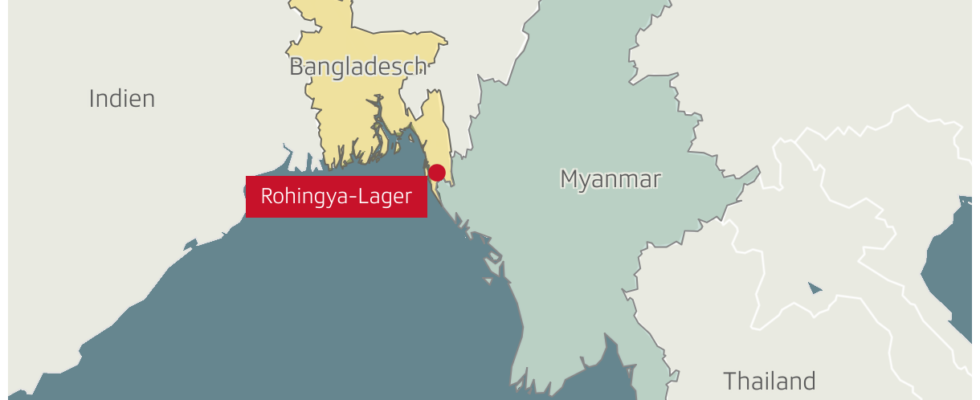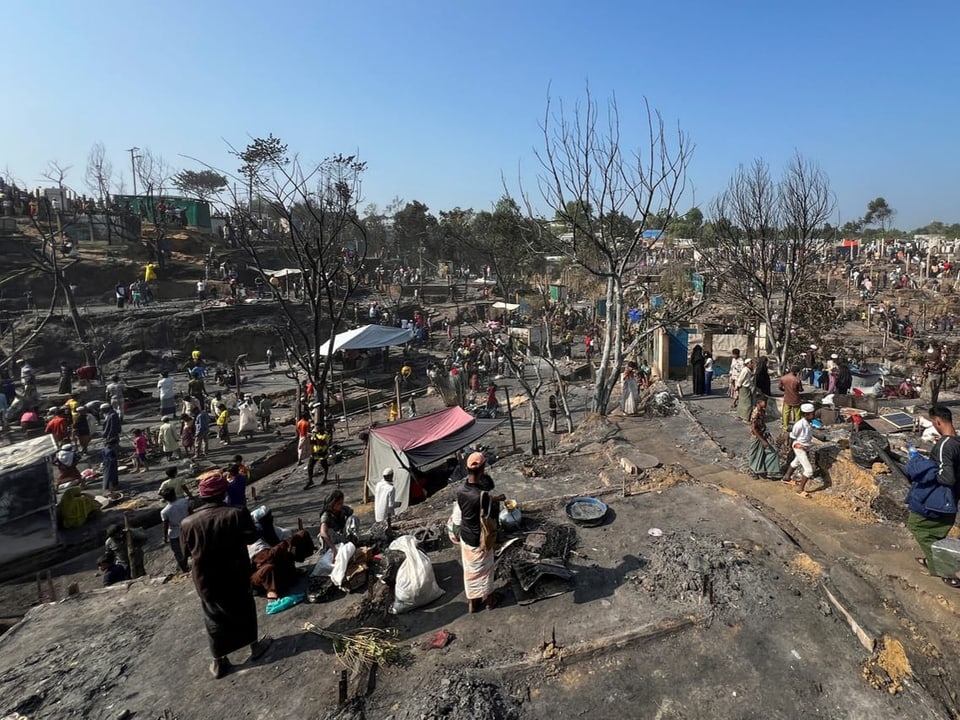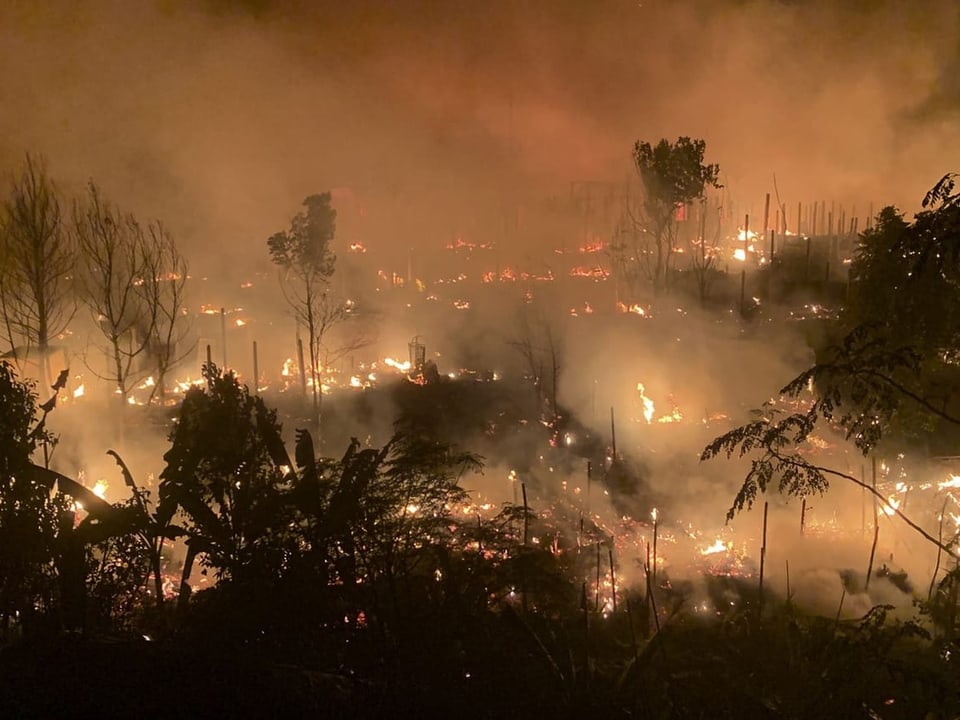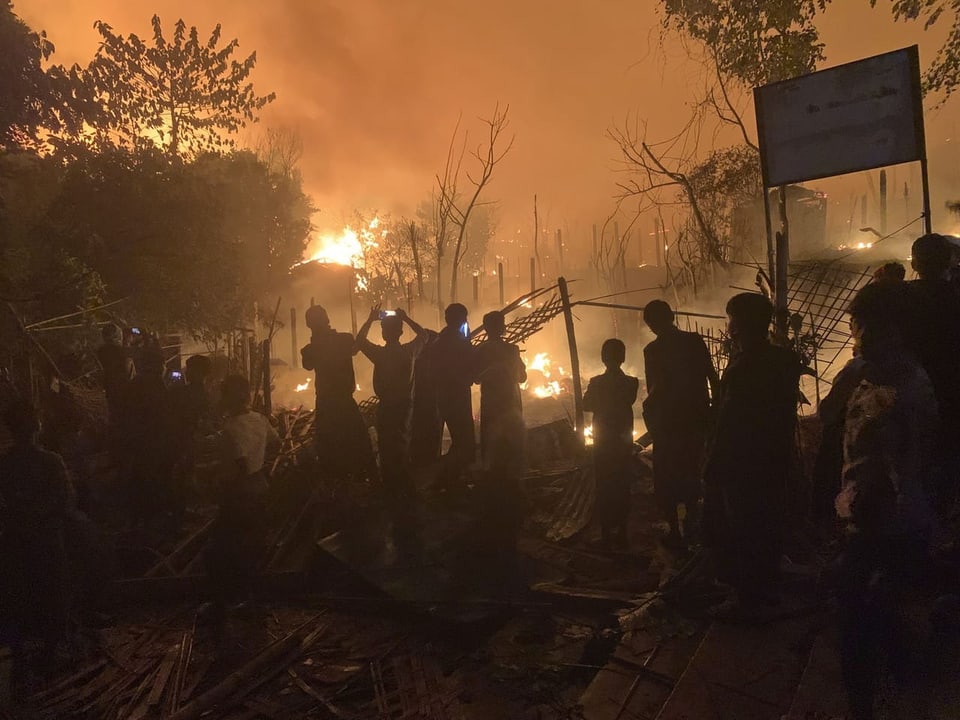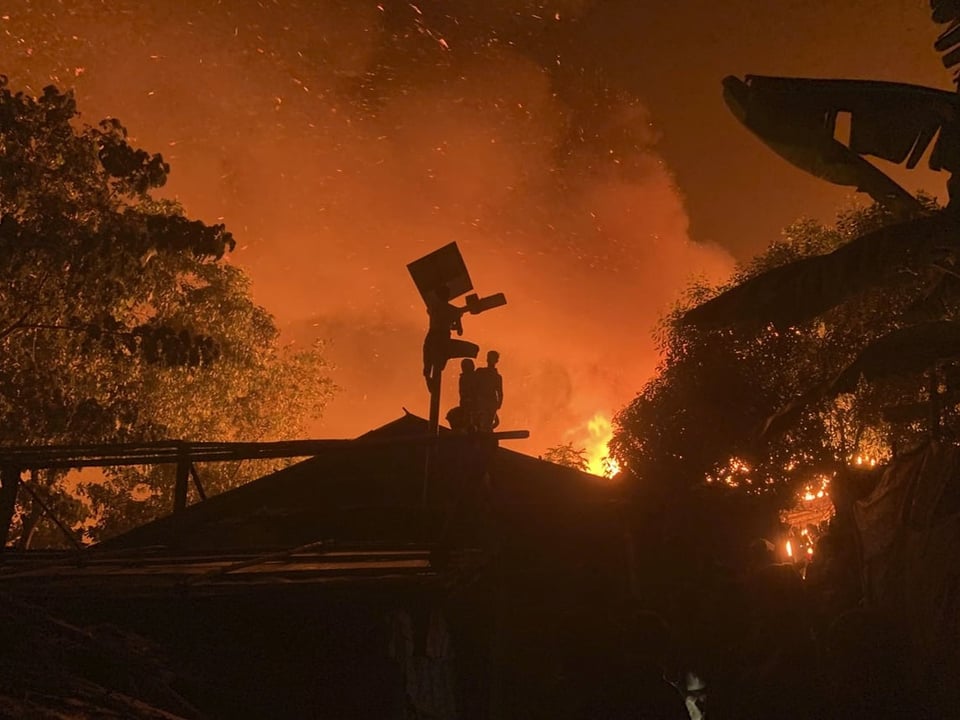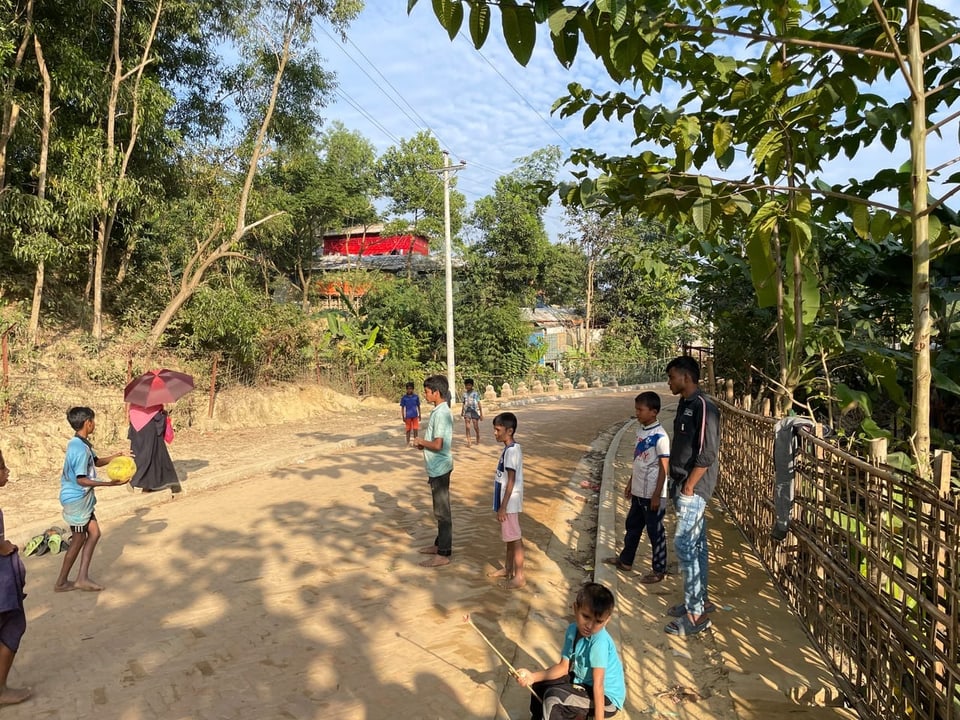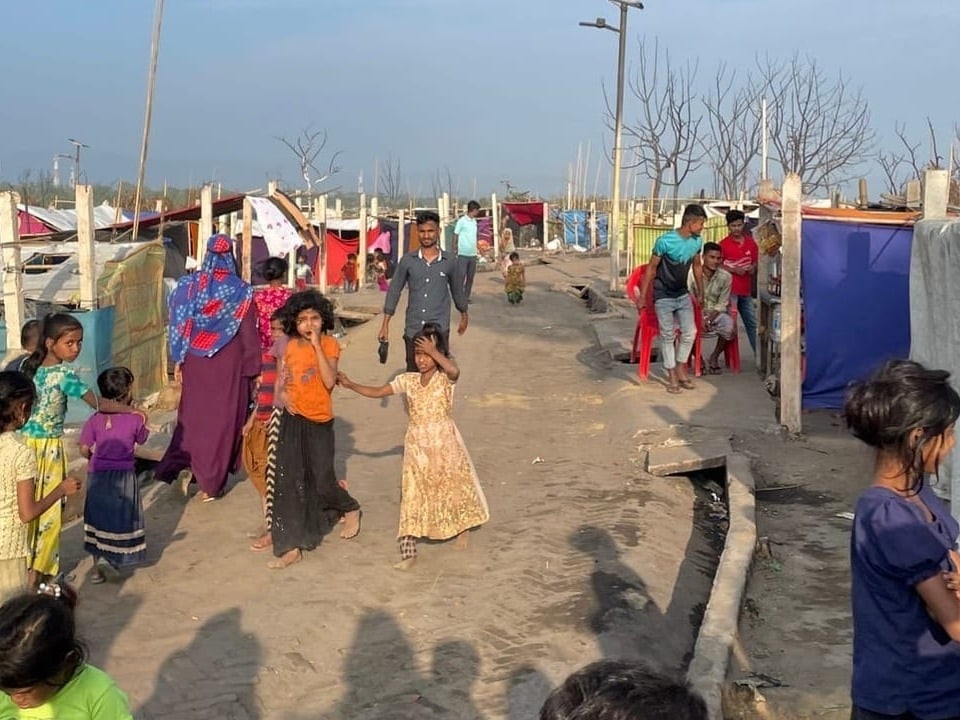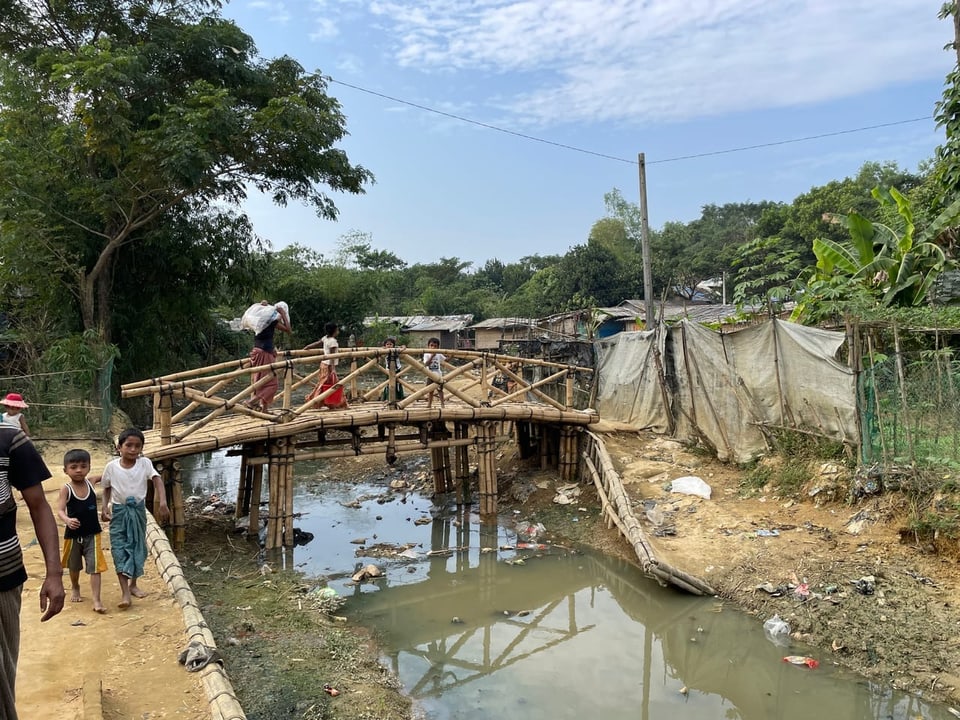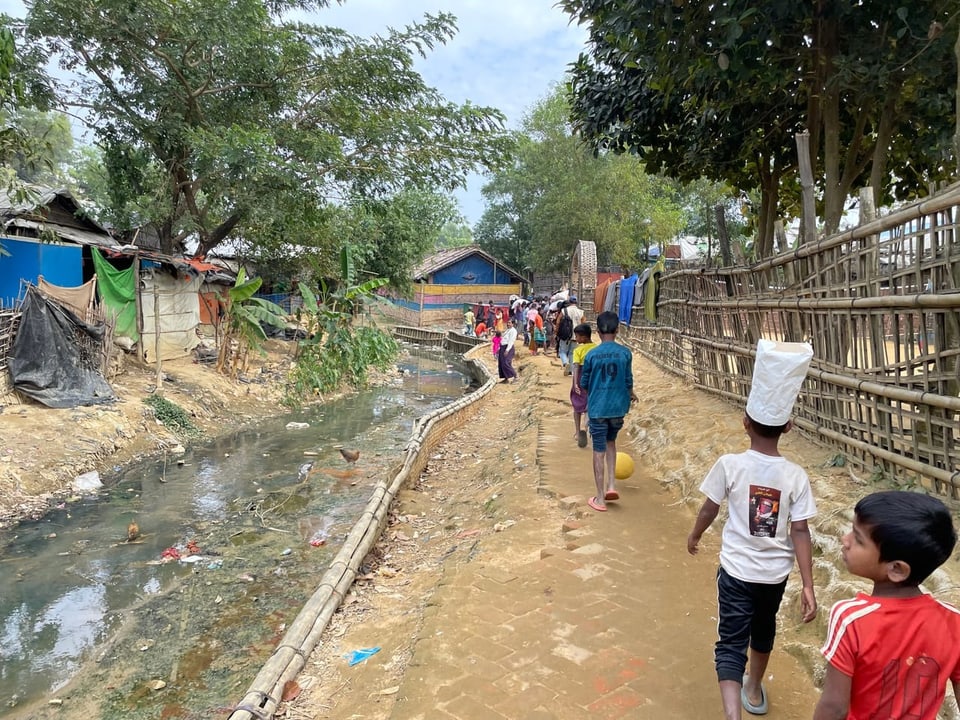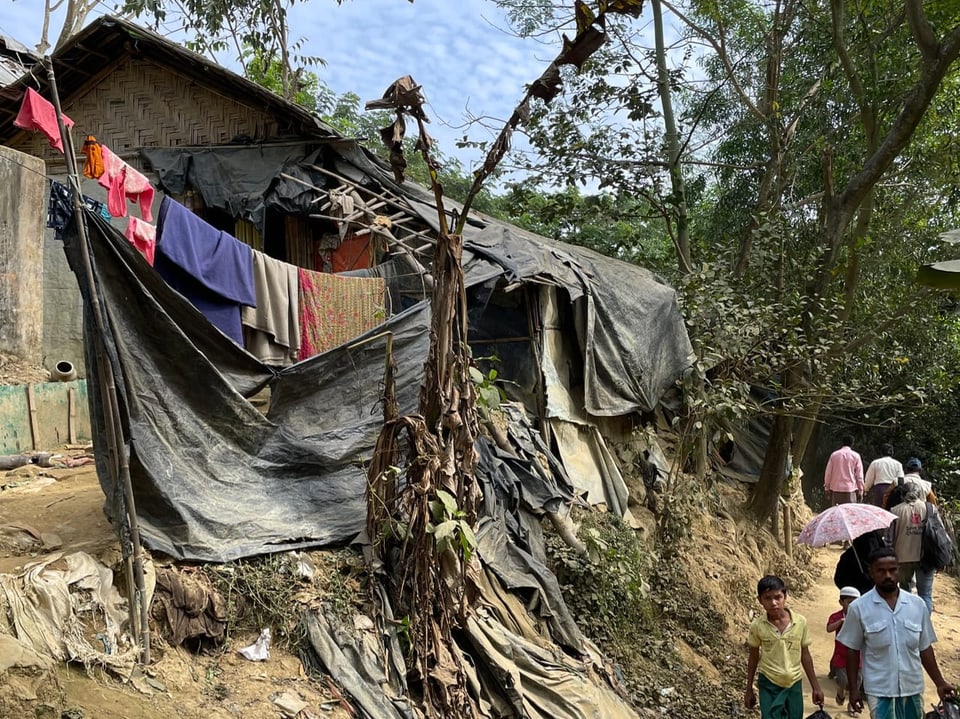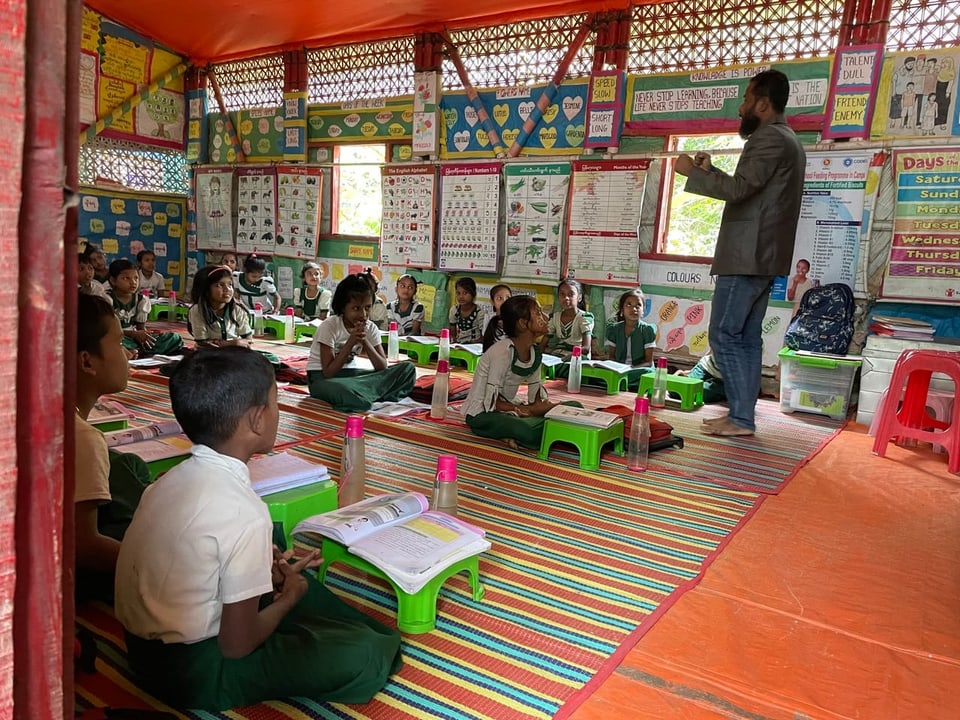Contents
A fire has raged in the world’s largest refugee camp in Bangladesh. A journalist was on site.
What happened? Around ten days ago, a fire broke out in the world’s largest refugee camp in Bangladesh. There were neither injuries nor deaths. However, almost 1,000 huts were destroyed. Around 5,000 of the approximately one million people living in the refugee camp are affected by the destruction.
What is the situation on site? The fire occurred on a hill in the refugee camp. “It looks really devastating there,” says ARD correspondent Charlotte Horn. Everywhere the earth is still black from the remains of ash. Bare tree trunks towered into the sky. And wherever there were once huts, empty spaces and concrete cornerstones can now be seen.
Rohingya refugee camp in Bangladesh
What does that mean for the refugees? The people who built this place and whose huts have now burned down have to start over again, the journalist explains. She has already seen people securing her location. They had built a new shelter on burned-out areas, improvised from blankets and tarpaulins. In addition, they cannot provide for themselves at the moment, which is why the World Food Program is distributing warm meals.
What about the burnt down huts? People were hoping for support in rebuilding their huts, says Charlotte Horn. The UN refugee agency has already assured this. According to their spokeswoman, they want to build the huts from more durable materials, such as concrete or steel. However, the government of Bangladesh does not give permission for this. In this respect, it probably comes down to huts made of bamboo and tarpaulins.
Can the Rohingya prepare for disasters? It is difficult to prepare for natural disasters in hilly jungle areas, says Horn. However, there are now volunteer Rohingya who have been trained in firefighting by aid organizations in order to alert the people in the camp at an early stage. According to one of the aid organizations, it is thanks to the helpers that there were no fatalities. The journalist also knows that the Rohingya built a shelter against cyclones with international help. But there would be no room for a million people.
Is the support enough? “People are completely dependent on aid organizations,” explains the ARD correspondent. Thanks to the organizations, people would have access to treated water and food rations. But a man told her that the ration wasn’t enough. Many women are forced into prostitution because they need food for their children. Crime also increased “extremely” last year. Robberies, kidnappings, murder and drug smuggling are increasing.
What does the future look like for the Rohingya in the refugee camp? This is actually quite bleak, says Horn. Especially for the youngest. Half of the Rohingya refugees in the camp are children. They could go to learning centers, but would hardly have access to normal schools. In addition, Rohingya are not welcome in Bangladesh. The country has already deported 30,000 Rohingya. The Bangladeshi government is talking more and more about repatriation, says the journalist. It remains to be seen when this will begin. Some observers believed the solution was Myanmar. The ruling military junta would have to allow the Rohingya to return. That hasn’t happened yet. “Perhaps more international pressure is needed – from the USA, the EU or China,” says Horn.
